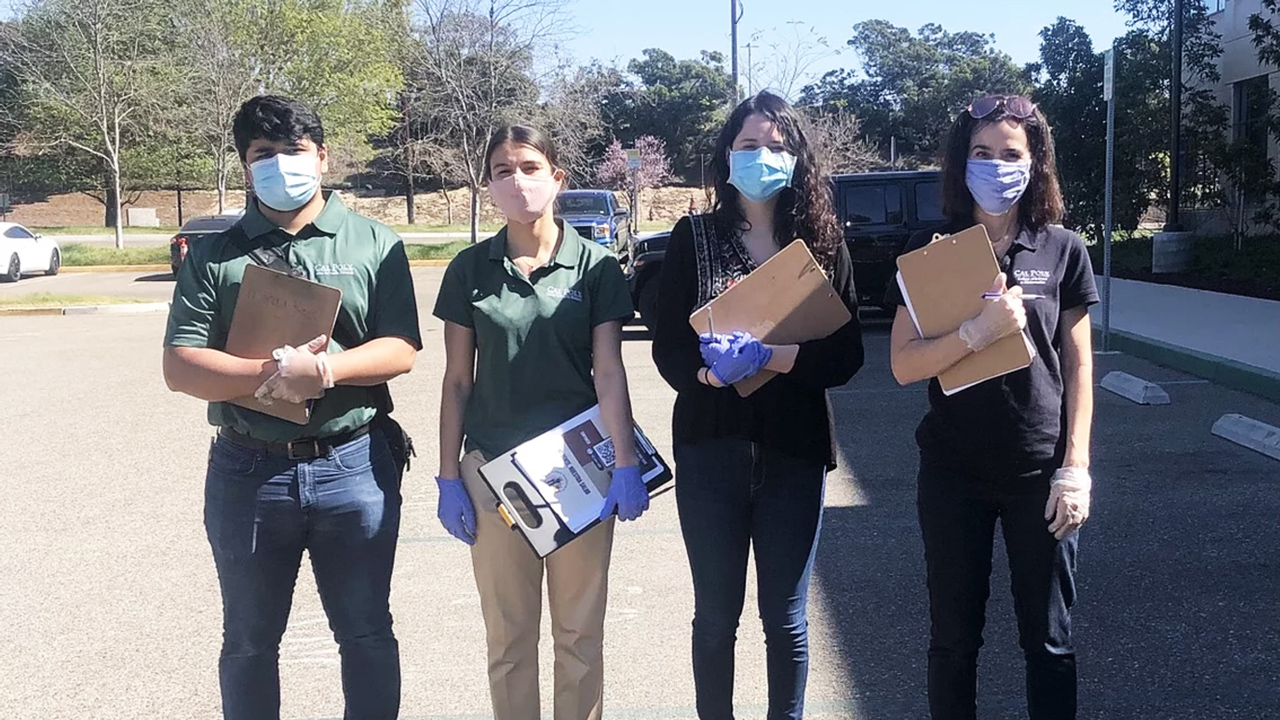In 2019, Kinesiology and Public Health professor Suzanne Phelan read about a program in Jamkhed, India, that empowered residents to take ownership of their health.
What if we did that here? she thought.
Phelan gathered a group of investigators from Cal Poly’s Center for Health Research to brainstorm the project, ultimately settling on the community of Santa Maria as the place to begin. Phelan, who runs the Women & Infants Mobile Health Unit to address women’s health issues in the area, was already aware of the health disparities in the city’s Latinx population.
“We’ve always known about inequities in access to healthcare in the work we do. There are some populations that are just better off than others, not because of poor choices, but because of life circumstances. It’s something we were all interested in,” said Marilyn Tseng, a Kinesiology and Public Health professor and one of the co-principal investigators of the project (the other co-principal investigator, ethnic studies professor Mario Espinoza-Kulick, recently left Cal Poly to work for Future Leaders of America, a non-profit community organization in Santa Maria, but is still involved in the project).
The project, which eventually became known as Mi Gente, Nuestra Salud (My People, Our Health) got the funding to move ahead from Cal Poly’s Strategic Research Initiatives program right before everything locked down — and the pandemic threw those inequities in healthcare into even starker relief.
“You could see that many of the cases in Santa Barbara County were in Santa Maria. There was clearly an overrepresentation of COVID cases in Santa Maria as opposed to the rest of the county, and Santa Maria is also very much a Latinx city, more so than other parts of Santa Barbara County,” Tseng continued.
It can be tough balancing school and leadership positions we hold as students and still remind ourselves that because we are so blessed in life, it’s our duty to give back.
So far, the students involved in the project have identified important community resources and contact people for them, strategized on the best way to reach the community, performed Spanish translation work and worked with community members to fill out questionnaires, in order to better understand the community’s healthcare needs. While the project is still in beginning stages, the end goal is to empower the community to take charge of their healthcare.
Tseng emphasized that Cal Poly is just one of the organizations working on this type of initiative in Santa Maria — and they’re partnering up with people from Santa Barbara County and UC Santa Barbara to help reach the same goals.
“This is an entirely collaborative effort,” Tseng said.
Third-year nutrition student Valeria Diego, a research assistant with Mi Gente Nuestra Salud, said she was looking for a research project to be involved in last summer when the project hooked her.
“The title alone attracted me because I love the idea of the movement of people as a whole,” she said. “I’m passionate about helping individuals no matter their background and putting myself out there to make change.”
Diego, who grew up in Mexico, said that going to Santa Maria and conducting the questionnaires was a rewarding experience.
“I had the opportunity to interact with people and make conversations about their day and their experience in Santa Maria,” she said. “It really feels like home. Most of the people we approach only speak Spanish and it’s always nice to have a conversation with them, make them feel welcome, make them feel understood.
“We’re letting them know we want to be there for them, we want to have a presence in the community and work together to make change,” she continued.
Elisa Gonzalez, a fourth-year public health major and research assistant on the project, said the work resonated with her because of her passion for working with underrepresented communities.
“I have a connection with this community because it’s a primarily immigrant community,” Gonzalez said. “I definitely experienced those healthcare barriers within my own family, like going to the doctor but the doctor doesn’t speak Spanish, so my dad had to have me there — things like that that I’ve personally experienced.”
Diego said that, during the initial stages of surveying Santa Maria residents, the students have learned that people in the community want to advocate for others and are willing to learn about new resources and new opportunities. The next step, after all the survey data is compiled, will be conducting focus groups to figure out the best approach.
Diego said she’s looking forward to being a part of the project as it continues to develop and has appreciated being able to take part in an effort to help a community she relates to.
“What’s better than helping a community we can identify with as Spanish speakers, helping them alleviate stress, and letting them know we want to support them?” Diego said. “It can be tough balancing school and leadership positions we hold as students and still remind ourselves that because we are so blessed in life, it’s our duty to give back.”



